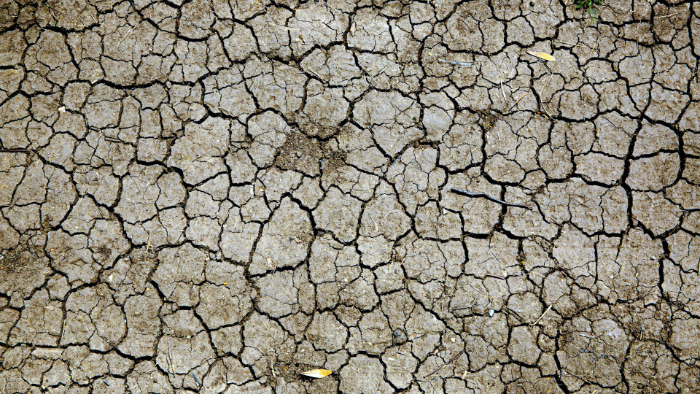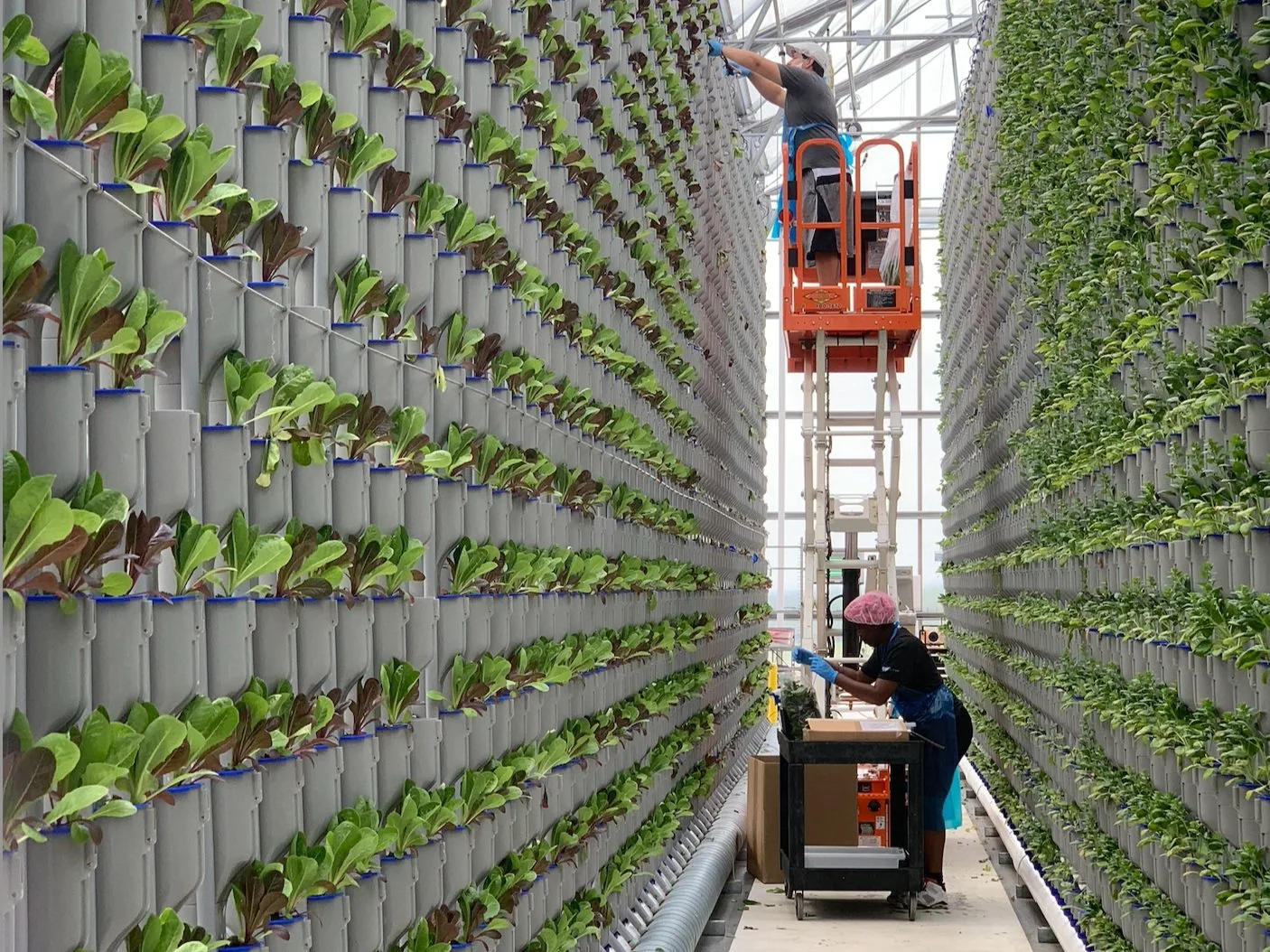What Is Soil Erosion and Degradation?
Soil is among the most essential natural resources on Earth. It provides the foundation for growing plants, supports ecosystems, and helps sustain life.
Soil erosion happens when wind, water, or human activity moves the top layer of soil away. This layer is the most fertile part of the soil, so losing it can harm the land. Soil degradation is when soil quality declines over time, making it less useful for growing crops or supporting plants.
Understanding soil erosion and degradation is vital. These problems can reduce food production, harm the environment, and impact the lives of millions of people. By learning more about these issues, we can find ways to protect the soil and support sustainable farming practices.
What Is Soil Erosion?
Soil erosion is when the top soil layer is removed from the land. This topsoil is rich in nutrients and organic matter, making it essential for growing crops, supporting plant life, and maintaining ecosystems. When soil erodes, the land is less fertile and more vulnerable to damage.
While soil erosion happens naturally, human activities have significantly accelerated its rate, leading to environmental and agricultural challenges. Understanding what causes erosion and the forms it takes can help us find ways to protect the soil and preserve its health.
Definition of Soil Erosion
Soil erosion occurs when natural forces like wind and water—or human actions—move soil from one place to another. This process primarily affects the topsoil, which is the most productive and nutrient-rich layer. Losing this layer can reduce crop yields, degrade landscapes, and cause environmental problems such as water pollution.
Causes of Soil Erosion
Soil erosion happens for several reasons, but it typically falls into two main categories: natural factors and human activities.
Natural Factors
Water — Rainfall can wash soil away, especially during heavy storms. When water flows over unprotected soil, it loosens particles and carries them downhill. This issue is most common on slopes or in areas with little vegetation.
Wind — In dry and sandy regions, strong winds can pick up loose soil particles and scatter them over long distances. This is particularly damaging in areas where the bare land or vegetation has been removed.
Human Activities
Deforestation — Cutting down trees removes their root systems, which normally hold soil in place. Without these roots, wind or water easily carries the soil away.
Overgrazing — When animals eat too much vegetation, they expose the soil underneath. Without plants to anchor the soil, it becomes more vulnerable to erosion.
Improper Agricultural Practices — Farming methods like over-tilling or leaving fields bare between planting seasons disturb the soil and make it prone to erosion.
Types of Soil Erosion
Soil erosion doesn’t always look the same. It can occur in different ways, each with its own challenges and effects.
Sheet Erosion — This happens when a thin layer of soil is removed evenly across a large area. It’s often hard to notice but can lead to significant nutrient loss over time.
Rill Erosion — Small channels or rivulets form as water moves through the soil. These channels may start small but can grow larger if left unchecked.
Gully Erosion— Gully erosion is the most severe form. As water cuts deep into the land, large trenches or ditches form. These gullies make the land difficult to farm and cause major landscape disruptions.
Soil erosion damages farmland and has ripple effects on the environment. Understanding its causes and types is the first step toward preventing it and protecting this vital resource for future generations.
What Is Soil Degradation?
Soil degradation happens when the quality of soil declines over time. Healthy soil contains nutrients, organic matter, and tiny living organisms that help plants grow. When soil is degraded, it loses these important features, making it harder for plants to grow and for the soil to hold water or nutrients.
Soil degradation is a worldwide problem that affects farming, the environment, and food security. It happens for many reasons, but most causes can be linked to human activity and natural processes. Understanding the causes of soil degradation is the first step in finding solutions.
Definition of Soil Degradation
Soil degradation means the soil is becoming less healthy and less useful. This can happen in many ways, such as losing nutrients, becoming compacted, or being contaminated by chemicals. Degraded soil can’t hold as much water, so plants have a harder time surviving. Over time, this process can turn once-productive land into an almost barren area.
Causes of Soil Degradation
Soil degradation has several main causes. Each type of cause harms the soil differently:
Chemical Causes
Pollution from factories, pesticides, or fertilizers can damage the soil and harm the organisms that live in it.
Salinization happens when too much salt builds up in the soil, which can occur after improper irrigation.
Acidification, caused by acid rain or too much fertilizer, lowers soil pH and makes it harder for plants to absorb nutrients.
Physical Causes
Compaction happens when soil is pressed down by heavy machinery or livestock, making it harder for water and air to move through.
Erosion removes the topsoil, which is the most fertile layer.
Losing soil structure happens when farming methods break down the natural arrangement of soil particles.
Biological Causes
Overuse of the soil can lead to decreased organic matter, which is needed for healthy plants and soil organisms.
A loss of biodiversity reduces the number of helpful microbes and insects that keep the soil productive.
Impacts of Soil Erosion and Degradation
Soil erosion and degradation affect much more than the ground beneath our feet. These processes have far-reaching consequences for the environment, agriculture, and society. Losing healthy soil threatens ecosystems, food production, and even human livelihoods. Understanding these impacts is key to protecting one of Earth’s most valuable resources.
Environmental Impacts
Healthy soil is essential for supporting plant life, storing water, and maintaining ecosystems. When soil erodes or degrades, the effects ripple through the environment.
One of the biggest issues is the loss of fertile topsoil. This top layer is where most nutrients and organic matter are found. Plants struggle to grow without it, and the land becomes less productive. Over time, this can lead to desertification, where once-fertile areas turn into barren landscapes.
Erosion also causes sedimentation in waterways. When soil is washed away, it can clog rivers, lakes, and reservoirs with sediment. This reduces water quality and disrupts aquatic ecosystems. Pollution from fertilizers and pesticides in the soil often ends up in these waterways, further harming the environment.
Finally, soil erosion and degradation reduce biodiversity. Plants, animals, and microorganisms that rely on healthy soil struggle to survive when their habitat is damaged.
Agricultural Impacts
Farmers depend on soil to grow crops; erosion or degradation can lead to serious challenges. One of the most direct impacts is decreased crop productivity. Without fertile soil, plants can’t get the nutrients they need, leading to lower yields and economic losses for farmers.
Many farmers turn to fertilizers to compensate for poor soil quality. While this can temporarily boost production, it’s not a sustainable solution. Overusing fertilizers can further harm the soil and pollute nearby water sources.
Socioeconomic Impacts
The loss of healthy soil also affects communities. For people who rely on farming for their livelihoods, degraded land can force them to move. This displacement of communities often leads to increased poverty and social instability.
At a global level, soil erosion and degradation contribute to food insecurity. As farmland becomes less productive, growing enough food to feed the rising population becomes harder.
Solutions to Combat Soil Erosion and Degradation
Soil erosion and degradation are big problems, but there are ways to fix them. Natural methods, better farming practices, and new technology can help protect and restore soil. These solutions work together to keep soil healthy and support agriculture and the environment.
Natural Solutions
Nature offers great ways to protect the soil.
One method is planting cover crops like clover or rye. These crops cover the ground between growing seasons, protecting the soil from wind and rain. They also add nutrients to the soil as they degrade.
Another solution is agroforestry and reforestation, which means planting trees alongside crops or in bare areas. Trees help hold soil in place with their roots and reduce the impact of heavy rain. Adding trees also creates habitats for animals and improves the environment.
Agricultural Best Practices
Farmers can use smart techniques to prevent erosion and improve soil health.
No-till farming skips the step of plowing the soil. This method helps keep the soil intact and reduces erosion. It also keeps moisture in the ground and supports good bacteria and worms.
Crop rotation involves changing the varieties of plants grown in a field each year. For example, growing corn one year and beans the next helps the soil stay fertile and healthy.
Terrace farming is useful on hills. Farmers create flat areas that slow down water, which prevents erosion and allows water to soak into the soil.
Technology-Based Solutions
Hydroponics systems, like the ones used by Eden Green, grow plants in water instead of soil. This tactic eliminates the risk of soil erosion and degradation.
Eden Green’s vertical farms grow crops in layers to save space and resources. These systems produce food without harming soil or the environment.
How Eden Green Technology Addresses These Issues
Soil erosion and degradation are major threats to farming and the environment. However, Eden Green Technology offers a solution through innovative farming systems. Our greenhouses are run on hydroponics and vertical farming. We grow food without needing soil, tackling these challenges at their roots. This method also brings several other benefits, from conserving resources to reducing environmental damage.
Soil-Less Farming Systems
Eden Green’s farming system is based on hydroponics, a way of growing plants without soil. Instead of relying on the land, plants are placed in water enriched with nutrients. This gives plants everything they need to grow while completely avoiding the problems that come with soil.
In traditional farming, soil can degrade or erode over time, especially if it’s not managed properly. With hydroponics, farmers no longer have to worry about these issues. Plants can thrive in a controlled environment, even in areas where soil quality is poor or non-existent. This makes hydroponics a powerful tool for sustainable farming.
Benefits of Vertical Farming
Eden Green takes hydroponics a step further with vertical farming. Vertical farming stacks plants in layers instead of planting crops across wide fields, saving space and increasing yields in a much smaller area.
Vertical farming also uses fewer resources than traditional methods. For example, hydroponic systems use up to 90% less water while producing healthy, nutritious crops. Because the plants are grown indoors, there’s no need for large plots of land or harsh chemicals like pesticides. This method is ideal for urban areas or regions with limited resources.
Positive Environmental Impacts
Eden Green’s systems also help the environment. Since no soil is used, the risk of erosion and degradation disappears entirely. This keeps farmland intact and prevents harmful runoff from polluting rivers and lakes.
Additionally, vertical farming lowers agriculture's carbon footprint. By growing food closer to consumers, Eden Green reduces the need for long-distance transportation. The controlled environment also uses fewer energy-intensive resources, like fertilizers and machinery.
How We Can Protect Soil and the Environment
Soil erosion and degradation are significant problems that harm farms, ecosystems, and communities. However, we can take steps to solve these issues. Planting cover crops, reforesting bare land, and farming practices like crop rotation can all help protect soil.
Eden Green Technology provides a modern solution by growing plants without soil. Their hydroponic vertical farms prevent soil loss while using resources efficiently.
By choosing sustainable farming methods, we can save soil, grow healthy food, and protect the planet. Let’s work together to create a future where farming and the environment thrive.










